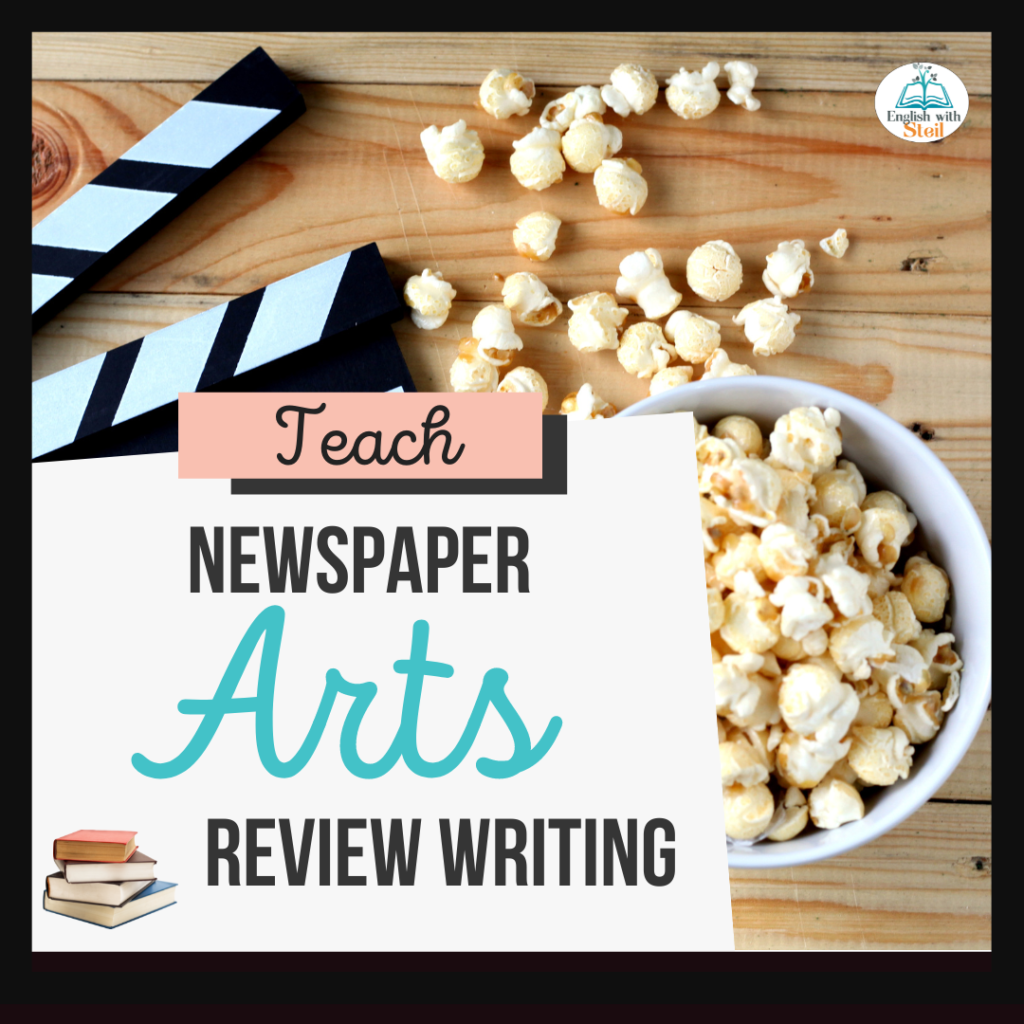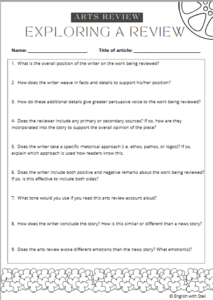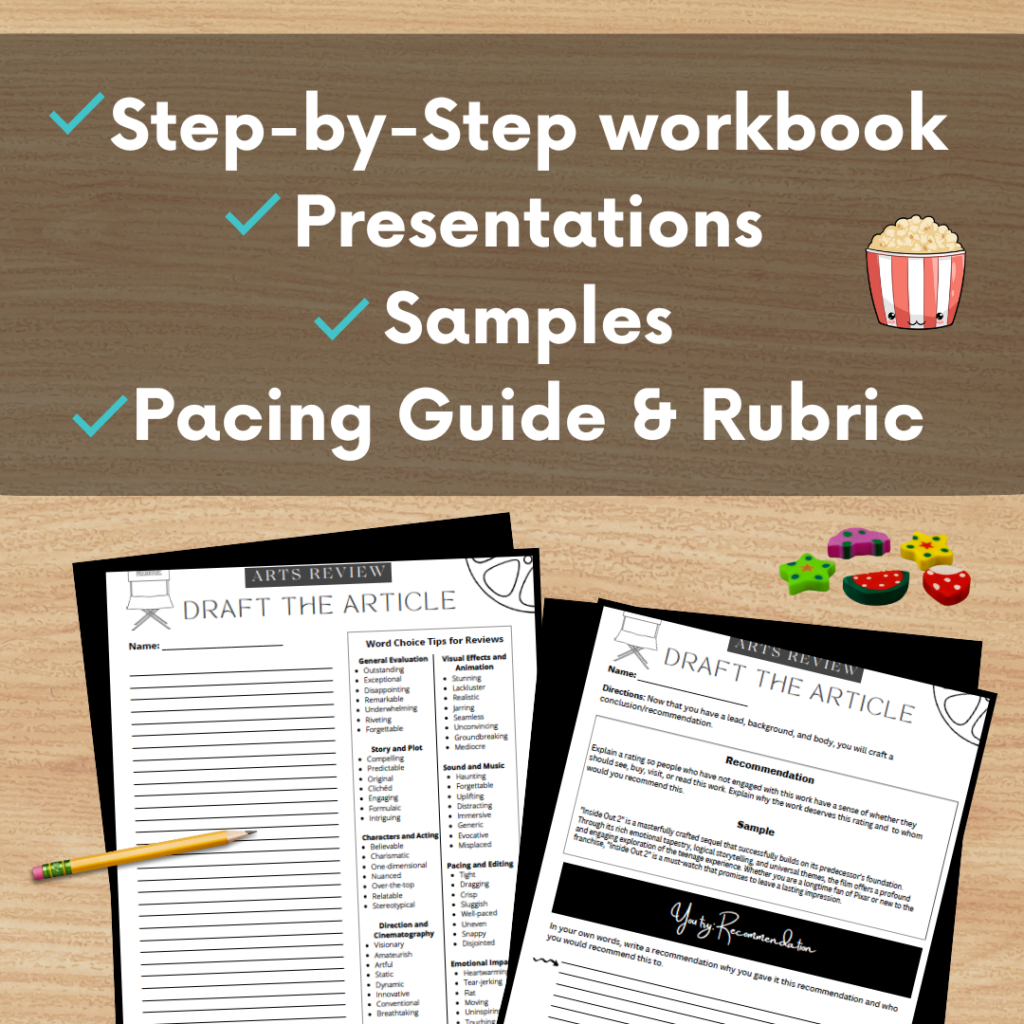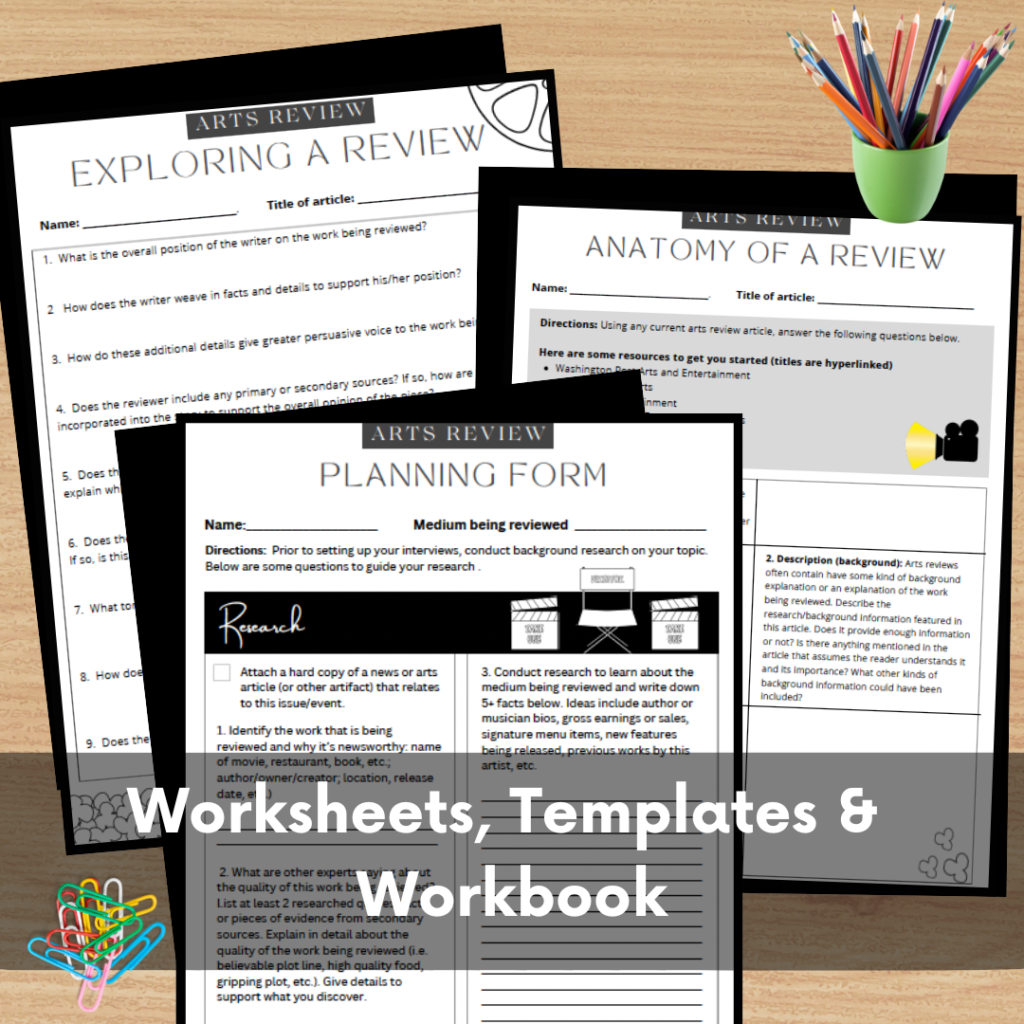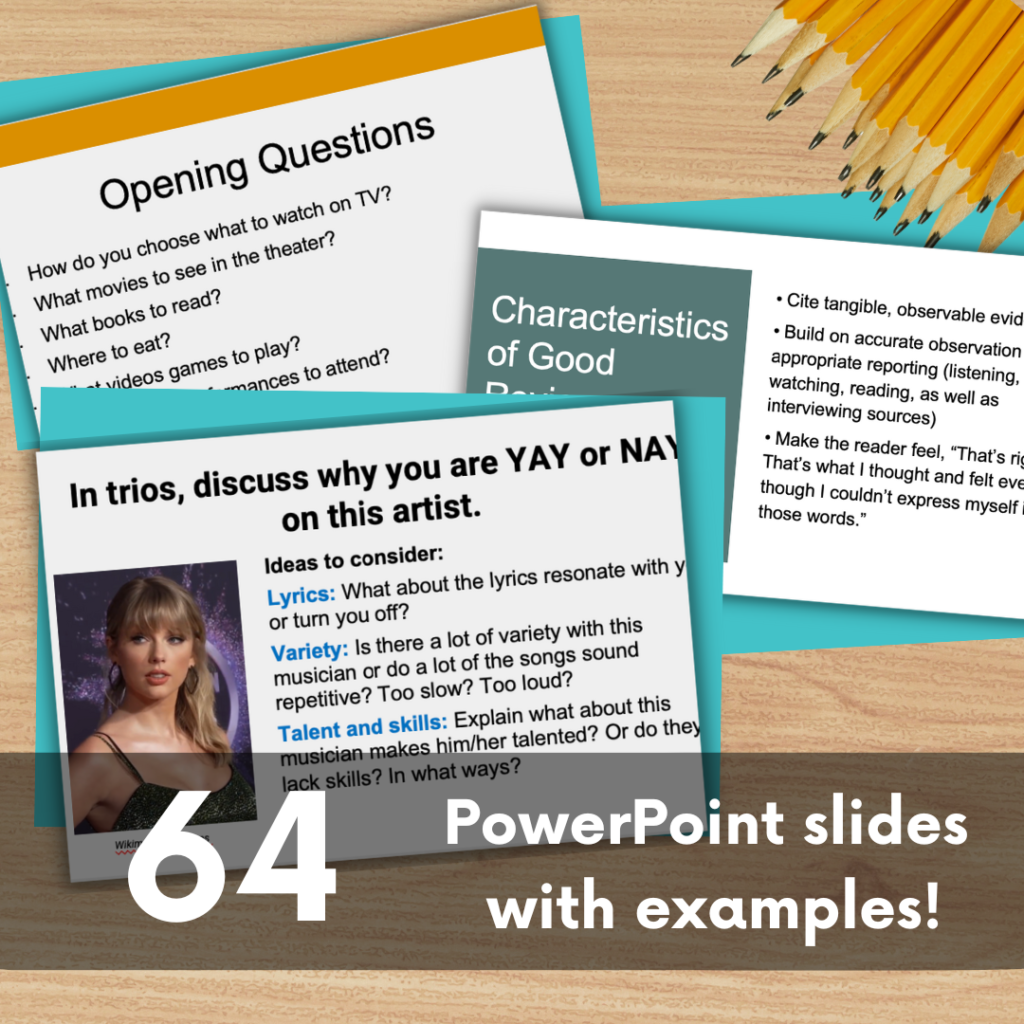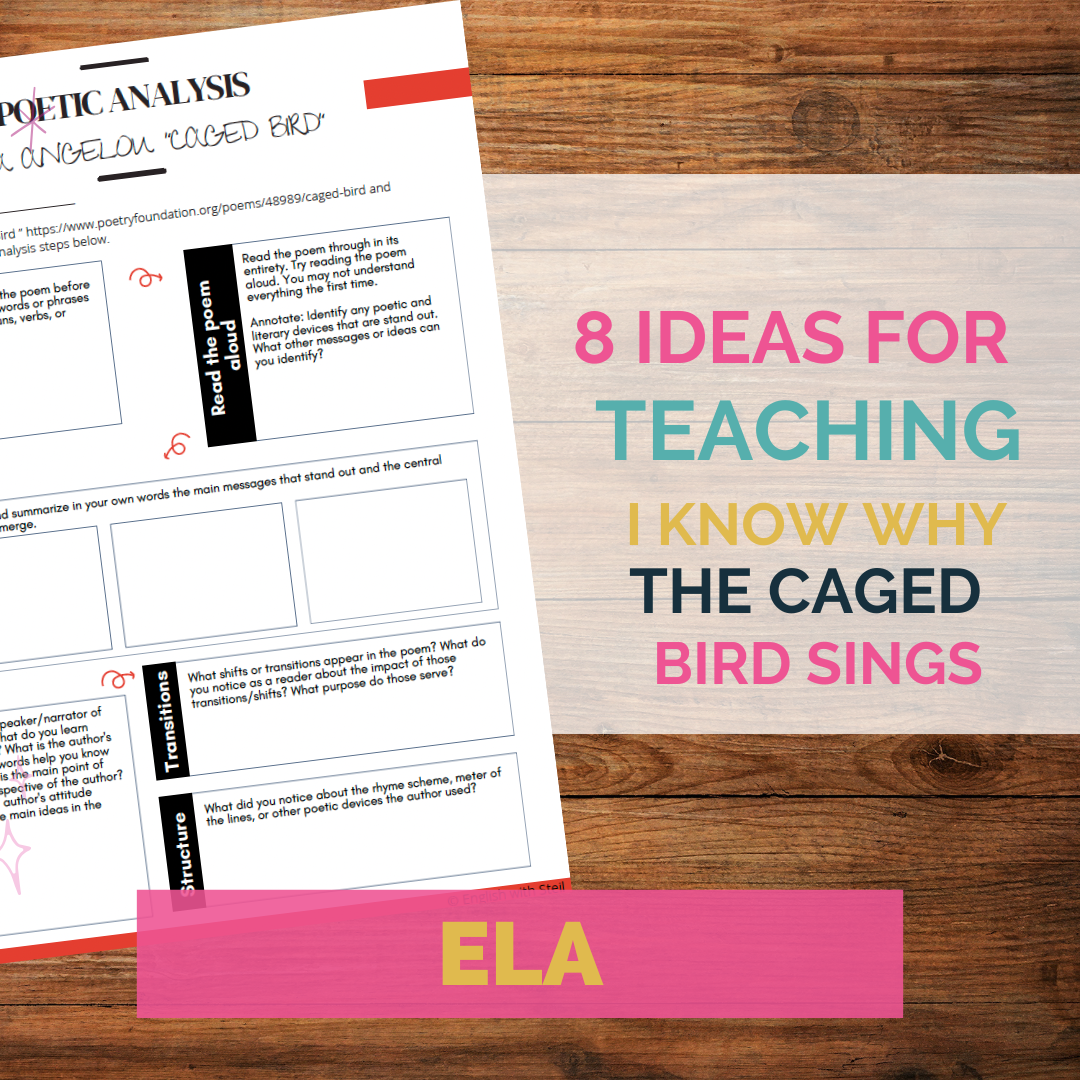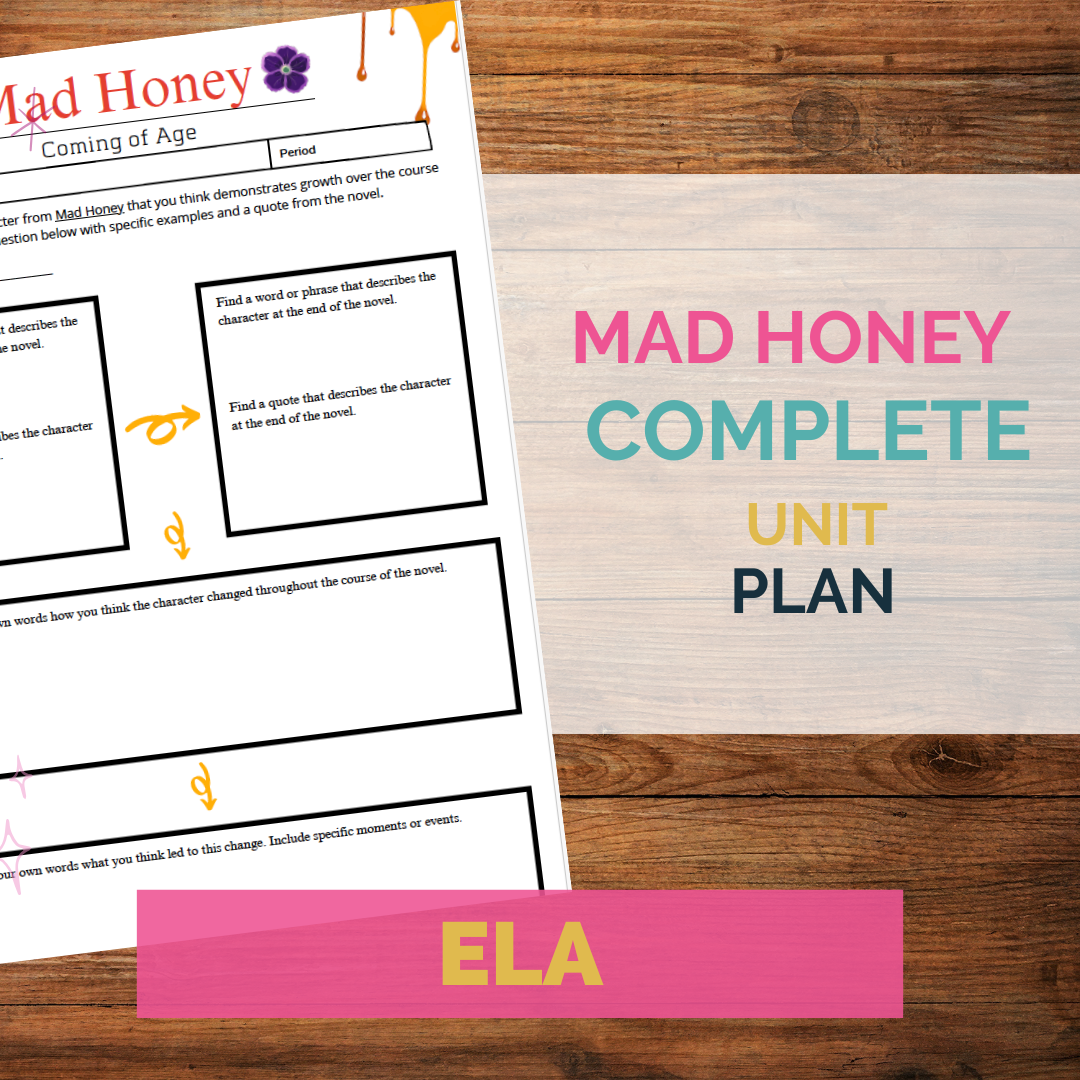Ratings, Likes, Survey, and Reviews oh my!
In today’s digital age, where likes and reviews heavily influence consumer choices, teaching students to write compelling and thoughtful reviews is more relevant than ever. Whether critiquing a movie, a video game, or a piece of music, students can learn to craft reviews that offer unique perspectives and build trust with readers. This post expands on simple strategies to teach students how to observe, analyze, and articulate their opinions effectively.
Are you tired of the same old, same old cliche reviews? Help your students understand these simple strategies for constructing any type of arts and media review, from a movie to a video game.
Why Teach Arts and Media Reviews?
Reviews are more than just opinions; they are thoughtful critiques that:
Help readers make informed decisions.
Foster critical thinking and analytical skills.
Encourage students to develop their personal voice and perspective.
By teaching students the art of review writing, educators can equip them with valuable skills for communication, observation, and analysis—skills applicable in any field.
1. Understand the Purpose of a Review
Before students begin writing, they need to understand the mission of a review:
Provide Honest and Fair Criticism: A good review often balances praise and critique, though this doesn’t always mean equal weight is given to both.
Offer a Unique Perspective: Encourage students to bring a fresh angle to their reviews, focusing on what makes the subject matter noteworthy or lacking.
Support Opinions with Evidence: Reviews should be grounded in observable details, such as specific scenes, lyrics, or production elements.
Resonate with Readers: A great review makes readers think, “That’s exactly how I felt, but I couldn’t put it into words!”
Classroom Tip:
Use examples of ineffective reviews to highlight common pitfalls, like excessive summarization or unsupported opinions. This will clarify the goal for students.
2. Learn from the Experts
One of the best ways to teach review writing is by showing students professional examples. Here are some resources to get started:
Washington Post Arts and Entertainment
New York Times Arts
USA Today Entertainment
Los Angeles Times Entertainment & Arts
Star Tribune Variety
Chicago Tribune Entertainment
Activity:
Have students read a selection of professional reviews and analyze them. Ask guiding questions like:
How does the writer structure their critique?
What evidence do they use to support their points?
How does their tone or style enhance the review?
3. Observe, Observe, Observe
A strong review begins with careful observation. Encourage students to engage deeply with the subject matter, whether it’s a film, book, or album. Remind them:
Focus on Quality, Not Summary: The goal is to critique the work, not to recount the plot or provide spoilers.
Engage with the Medium: To write a meaningful review, students must immerse themselves in the work—watch, listen, read, or experience it fully.
Document Initial Impressions: Use a Planning Form to guide students through their observations. Prompt them to note strengths, weaknesses, and aspects readers would most want to know.
Questions to Guide Observations:
Was the plot believable?
Did the music or soundtrack enhance the experience?
How did the visuals or production elements contribute to the overall quality?
Were the performances or characters engaging?
4. Develop Personal Style
Before diving into formal reviews, encourage students to find their voice through practice. One engaging way to do this is by watching a short musical like 21 Chump Street by Lin-Manuel Miranda.
Activity: Reviewing 21 Chump Street
Show the 14-minute musical and guide students through observation. Use prompts such as:
First Impressions
What do you think of the costumes, music, and characters?
How does the storyline unfold?
Are there any cultural references or themes that stand out?
Midway Through the Show
How has the tone shifted?
What’s your emotional response so far?
What predictions can you make?
Post-Viewing Reflection
What aspects did you like or dislike?
How did the choreography, acting, or music influence your opinion?
What’s your overall takeaway?
Students can map out their thoughts using an Organizational Template included in the Arts Review Unit.
5. Five Tips for Writing Effective Reviews
1. Start with a Strong Hook
Begin the review with an engaging sentence that grabs the reader’s attention. For example, a surprising opinion or a bold statement about the work’s impact.
2. Be Specific
Encourage students to use concrete examples. Instead of saying, “The movie was good,” they might write, “The film’s pacing was captivating, particularly in the climactic chase scene.”
3. Balance Objectivity and Opinion
While a review is subjective, it should be supported by factual observations. This builds trust with the audience.
4. Edit and Revise
Teach students to revise their reviews for clarity, conciseness, and impact. Peer reviews can be a helpful part of this process.
5. End with a Recommendation
Conclude with a clear recommendation. Would they suggest readers watch, read, or experience the subject? Why or why not?
6. Creative Assignments for Review Writing
1. Stylized Story Swaps
Have students write a short review and swap it with a peer for feedback and revision. This collaborative exercise improves critical thinking and editing skills.
2. Group Media Critique
Assign small groups to review the same piece of media. Compare and contrast their reviews in a class discussion to highlight different perspectives.
3. Create Multimedia Reviews
Students can create video or podcast reviews, incorporating visuals or sound clips to enhance their critique. This activity engages tech-savvy learners.
4. Compile a Class Review Blog
Publish students’ reviews in a shared blog. This not only motivates them to produce polished work but also gives them a platform to share their opinions.
Final Thoughts
Teaching students to write arts and media reviews is a dynamic way to build critical thinking, observation, and communication skills. By immersing them in the medium, encouraging personal style, and providing real-world examples, you can transform review writing into an engaging and rewarding classroom experience. Ready to inspire thoughtful critique in your students? Let’s get started!
Learn from the experts
One of the best ways to learn about how to write a review is to read examples from professionals who do this for a living. Here are some quick links to some of the most respected professional media reviewers. Observe how they use detail, description, and provide an opinion on the work being reviewed.
Here are some resources to get you started:
